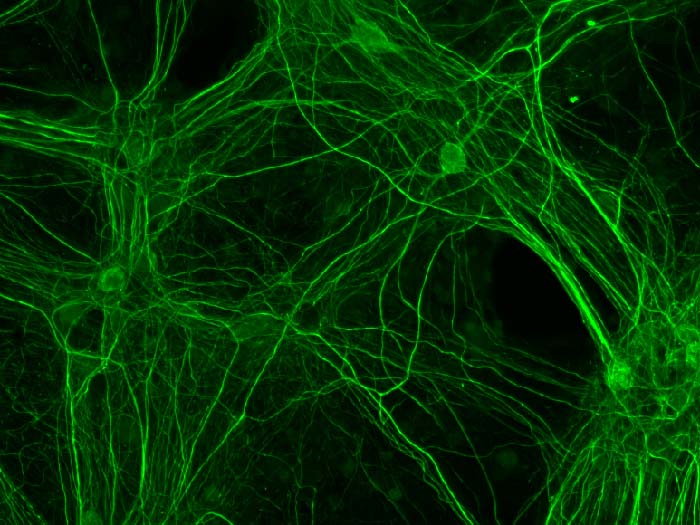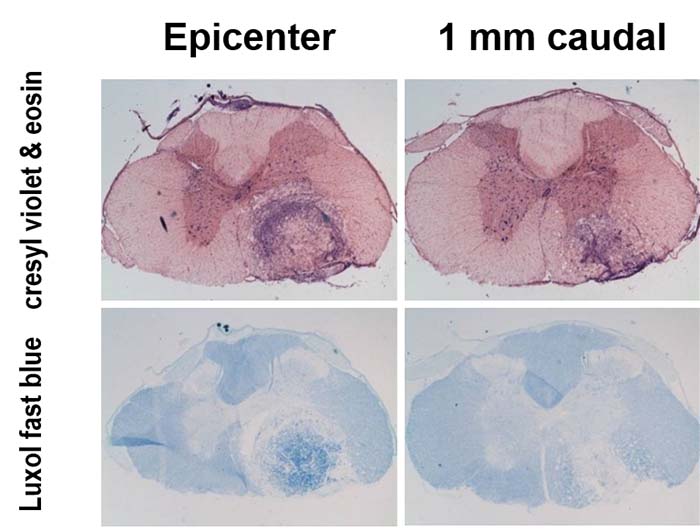Spinal Cord Injury Research
A spinal cord injury occurs when there is damage to the spinal cord or nerve cells. This type of injury is caused by a direct blow to the spinal cord of damage to the tissue surrounding the spinal cord. Damage higher up on the spinal cord are typically more serious injuries that can cause paralysis to a majority of the body. This is not the case for all injuries to the spinal cord and sometimes, the injury can be temporary or cause little to no cell death. Symptoms of a spinal cord injury can include: numbness or tingling in the hands and feet, paralysis, pain or pressure in the head, neck, or back, loss of movement, weakness or inability to move parts of the body, difficulty breathing, loss of bladder or bowel control, and more. Unfortunately, complications from spinal cord injury can cause permanent damage that is irreversible.
Research Overview
Spinal cord injury (SCI) research is the primary emphasis of the center. Throughout the years, we have pursued various technologies to improve the consequences of damaged cord tissue. Several have gone through FDA Phase 1 trials and are in the commercialization process. These therapies can be subdivided into several tracks:
Neuroprotection from Secondary Injury
Primary injury is defined as the initial mechanical/thermal trauma to the cord. This process is irreversible. Primary injury induces cell death, which can lead to the release of biochemical toxins outside of the cell. These toxins subsequently negatively affect neighboring healthy cells (bystander damage), which feeds into a positive feedback loop exacerbating the initial insult. The seminal event in initiating secondary injury damages the cell membrane. Thus, a key theme in our research is to “seal” these breaches in the cell membrane, thereby rescuing cells from certain death. Other therapies include scavenging the toxins that produced as a consequence of damage.
Repairing Damaged Neuronal Membrane
Mechanical impact, the primary insult that causes spinal cord injury, will produce neuronal membrane damage. If left unrepaired, it will lead to loss of axons and even cell death. We have shown that the repair of damaged membranes with polyethylene glycol (PEG) is an effective treatment to arrest structural damage and preserve neuronal function and survival.
Restoring Lost Function
In certain instances of spinal cord damage arising from mechanical insult or disease (such as multiple sclerosis), the nerve fibers remain intact, but the myelin sheath is disrupted. This perturbation or delamination of the myelin sheath exposes ion channels that are normally silent. The end result is conduction block. Over the years, our center has developed novel potassium ion channel antagonists that block these exposed ion channels, thereby restoring conduction to dysfunctional nerve fibers. Such agents have received FDA approval for treating symptoms associated with multiple sclerosis.
Regeneration of the Spinal Cord
Paralysis is predominately a white matter disease and these damaged tracts prevent the conduction of action potentials that ascend/descend the cord. Traditionally, the injured spinal cord microenvironment has been thought of as non-permissive to regeneration, but our center is looking into ways to convert this inhibition to promote regeneration of nerve fields to stimulate nerve fiber growth. The latter technology has gone through both veterinary and FDA Phase 1 trials. Currently, the center is looking for collaborations for additional veterinary and human clinical trials.
Focus Areas
- Targeting and neutralization of reactive aldehydes for neuroprotection
- 4-AP and derivatives (commercialized as FDA approved AMPYRA) to improve walking speed in multiple sclerosis patients to restore axonal conduction
- PEG has undergone FDA Phase 1 trials to repair damaged neuronal membrane
- Modulation of the neuroinflammatory response post injury

A cluster of stained neuron cells

A spinal cord injury stain

